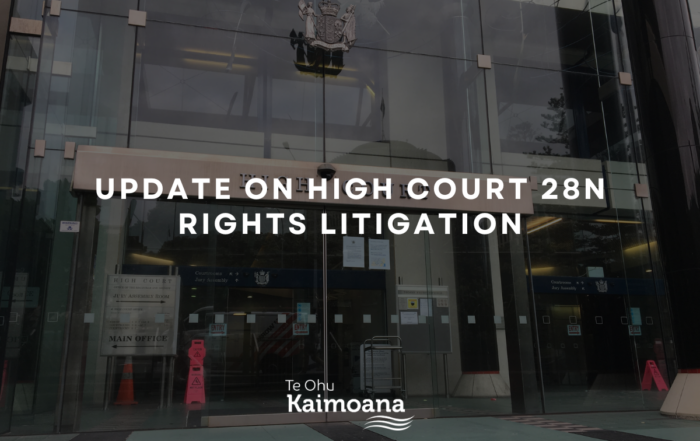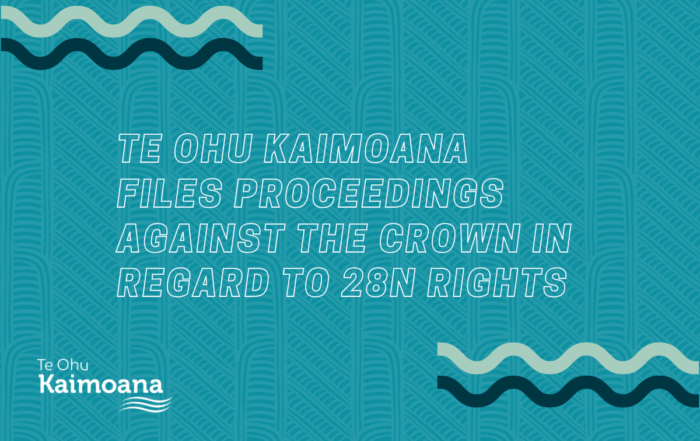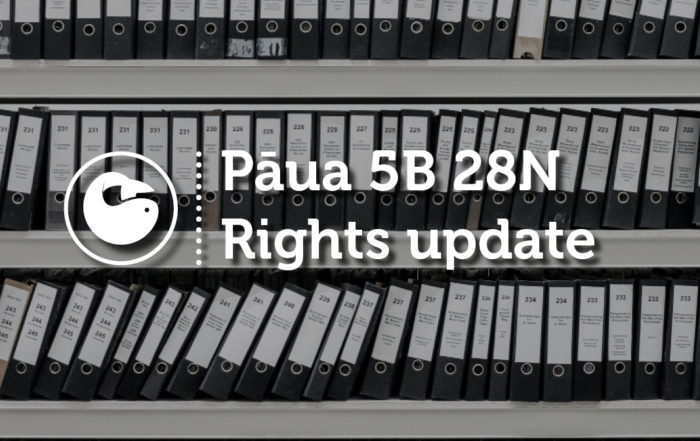28N Rights Proceedings
What is the 28N rights issue?
The introduction of the QMS and 28N rights
The Quota Management System (QMS) was introduced in 1986 and originally operated as a fixed tonnage regime. Under this regime the Crown bore the fiscal risk and reward of changes in the TACC for each stock. If the TACC for a stock went up, the new quota was allocated to the Crown who could sell it. If there was a TACC reduction the Crown would buy back the quota and pay full market rate compensation to the quota holders, determined by arbitration if necessary.
At the dawn of the QMS, many fisheries were heavily overfished and significant catch reductions were required to ensure they remained sustainable. It became evident that the amount of quota allocated to quota holders based on catch histories now exceeded what was deemed to be the sustainable limit for the fishery at the time.
In response to this, the Government offered quota holders two options:
- take a cash payout which corresponded to the reduction in their catch; or
- Rather than taking an immediate payout, quota holders could receive a deferred entitlement to future quota. This means the quota holder would wait and see if the TACC increased again, in which case their lost quota would be restored back to them at no cost. This was known as 28N rights (section 28N of the Fisheries Act 1983).
If the TACC went up and there were unredeemed 28N rights in the fishery, the new quota would go, free of charge to the 28N rights-holders. The free allocation meant the Crown was required to forego the revenue it would otherwise have gained from selling the quota, but in doing so it was slowly paying back the compensation debt it assumed through the 28N rights regime, when catch levels were reduced in 1986.
At this time, 28N rights were benign for other quota holders. If TACC went up, some operators might receive new quota free of charge, but existing quota holders lost nothing, apart from the opportunity to purchase quota if they wished. The only party that suffered actual loss was the Crown in the form of foregone revenue.
Settlement quota
Under the 1989 interim settlement the Crown transferred four tranches of roughly 2.5% of existing fishing quota to Māori which was later enshrined as part of the 1992 settlement. The total transferred was approximately 10% of existing fishing quota. This quota along with a subsequent allocation of 20% of quota in new species entering the QMS, is known as settlement quota.
Change from fixed tonnage to proportional tonnage system and its impact on 28N rights
The QMS changed to a proportional tonnage system in 1990. Instead of having a fixed tonnage system where the Crown had to compensate quota holders when TACC was reduced and sell the quota when TACC was increased, quota became proportional with each owners share set by the amount of quota held when the new system came into operation. The regime provided for proportional increases and decreases in TACC without compensation or cost. The Crown shifted the fiscal risk, administrative burden and contingent liability from itself to the other quota holders.
Under the new proportional system, when a TACC was increased in a fish stock where 28N rights had been issued, the Crown would simply allocate all the TACC to the 28N rights holders up to their entitlement. Existing quota holders did not reap the benefit of increases in TACC until the 28N rights were exhausted. Any remaining TACC was then distributed on a proportional basis to the remaining quota holders. The effect of this, which was disguised by the fact that everyone was getting increased TACC, was that the original proportionality of quota holdings, including the 10% of settlement quota, was being gradually eroded. The new allocation came at the expense of existing quota holding rather than the Crown.
Change to proportional share system and its impact on 28N rights
The Fisheries Act 1996, which came into force in 2001 introduced a proportional quota share system with a fixed 100 million shares for each fish stock. This change has compounded the 28N rights issue, as when 28N rights are triggered the Crown takes settlement quota shares away from quota holders, without compensation, and passes them onto 28N rights holders creating a permanent loss in shares.
In the event there is a TACC increase in a fishery with outstanding 28N rights, normal quota is just as susceptible as settlement quota to be taken for the satisfaction of 28N rights.
Updates on 28N rights litigation
High Court documents
The Court has granted us permission to publish the following documents:
Pānui | Notices
Below you will find all pānui from Te Ohu Kaimoana relating to 28N rights
Update on High Court 28N rights litigation
Background As you may recall, in October of 2023 Te Ohu Kaimoana filed a declaratory judgment proceeding against the Crown (Attorney General) to address its failing under the Fisheries Settlement and Te Tiriti o Waitangi [...]
Te Ohu Kaimoana files proceedings against the Crown in regard to 28N rights
6 Whiringa-ā-nuku 2023 On Monday 2 October, Te Ohu Kaimoana filed a declaratory judgement proceeding against the Crown (Attorney General and Minister of Oceans and Fisheries) to address its failing under Te Tiriti o Waitangi [...]
Pāua 5B 28N Rights update
We are pleased to advise that Te Ohu Kaimoana and Ngāi Tahu were successful in gaining interim orders to prevent the proposed increase in the PAU 5B TAC and TACC, and reallocation of settlement rights. [...]




